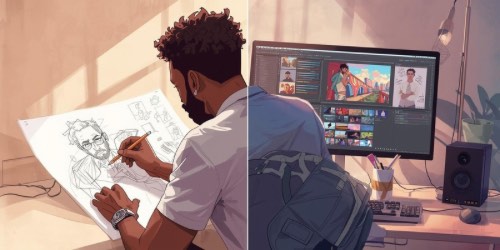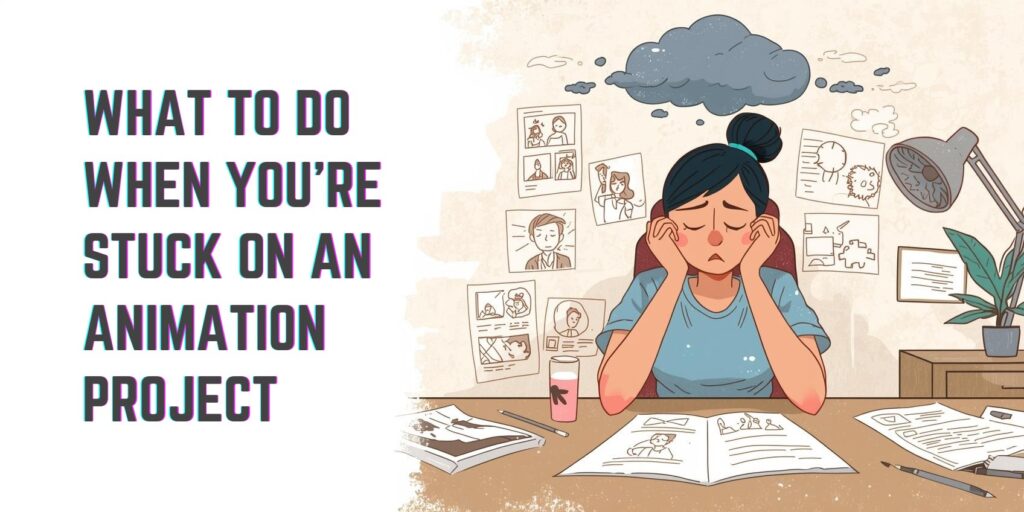Todd sat at his desk, staring at the timeline on his screen. Just earlier, his boss had leaned over his shoulder, reminding him the deadline was tomorrow. The animation scene still wasn’t working, and every second felt heavier than the last. The pressure was real—but instead of freezing up, Todd turned things around by breaking his work into smaller steps—because sometimes that’s all it takes—and you can use the same approach to break through your own creative block. Here’s how.
Shift from Hours to Minutes
Short, consistent sessions—just 15 to 30 minutes—stack up faster than scattered hours. One scene, one drawing, one idea refined per session compounds into real progress; it’s like steady watering instead of waiting for a perfect storm. Our friend and once-beleaguered animator, Todd, opened a timer, chose a single micro-task—clean spacing on frames 8–16—and stopped when the bell rang. Seeing a visible improvement in 20 minutes cut his dread in half and made the next sprint easier to start. Small sprints like this create momentum that keeps pulling you forward.

When your focus narrows to one clear action, the next small win becomes easier to see.
Use Constraints as Creative Fuel
Constraints reduce decision fatigue: limit yourself to one idea (a blink, a ten-frame cycle, a two-pose reaction). Clarity rises when options shrink, and performance reads cleaner on screen. The scope felt overwhelming, so Todd trimmed it down: he animated only the head and torso first, locked the intention, then layered arms later. With scope trimmed, the shot finally made sense. Fewer choices gave him more clarity, and his work instantly moved forward.

Working inside boundaries often reveals what matters most in the performance.
Batch and Prepare
Preparation is a force multiplier: keep a list of micro-prompts (blink + head turn, reach–hesitate–commit, flag in wind) so you start animating immediately when time appears. On Todd’s desk sat a one-page “next moves” sheet he had built: three micro-prompts for his current shot and two for practice. When he had 15 minutes, he didn’t brainstorm—he animated the next cue on the list. Having ideas prepped in advance meant his energy went straight into drawing, not deciding.
A ready queue turns stray minutes into real progress instead of planning time.
Protect Your Creative Energy
Guard attention like a tool: close extra tabs, silence notifications, and signal “in session” to anyone nearby. A clean environment and a single checklist prime deep focus fast. That same night, with interruptions finally quieted, Todd set a 25-minute session sign on his door, killed alerts, and used headphones as a visual do-not-disturb. With fewer pulls on his attention, he finished a clean pass he’d avoided all week. Protecting focus this way ensures limited time still produces meaningful results.
Want structured drills that turn tiny wins into steady progress? A guided course can give you prompts, deadlines, and feedback while you build consistency.
Final Thoughts
Animating with limited time isn’t about doing less—it’s about making every minute count. Thread small sprints, smart constraints, and prepared prompts through your week, and protect the attention that powers them. Todd moved from dread to motion by breaking work into smaller steps; you can do the same to reduce creative block and keep your project alive, one clear win at a time.
Source Material
- School of Motion – Tricks for Overcoming Creative Block
- Creative Bloq – 20 ways to overcome creative block
- 99U/Behance – 7 Types of Creative Block (and What to Do About Them)
- Animation Mentor – How To Overcome A Creative Block [VIDEO]
- School of Motion – Mastering MoGraph: Work Smarter, Hit Deadlines




























